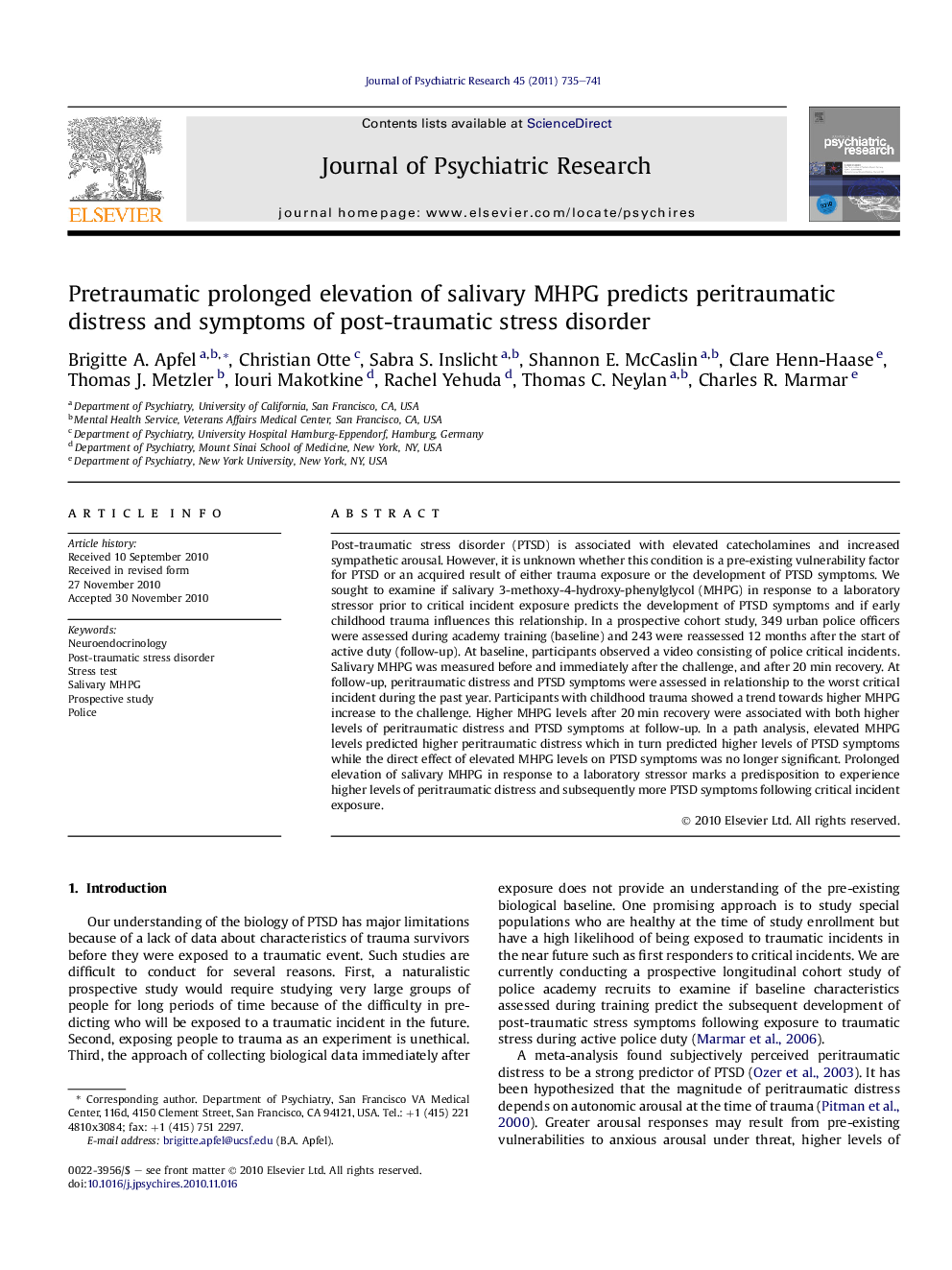| Article ID | Journal | Published Year | Pages | File Type |
|---|---|---|---|---|
| 10302308 | Journal of Psychiatric Research | 2011 | 7 Pages |
Abstract
Post-traumatic stress disorder (PTSD) is associated with elevated catecholamines and increased sympathetic arousal. However, it is unknown whether this condition is a pre-existing vulnerability factor for PTSD or an acquired result of either trauma exposure or the development of PTSD symptoms. We sought to examine if salivary 3-methoxy-4-hydroxy-phenylglycol (MHPG) in response to a laboratory stressor prior to critical incident exposure predicts the development of PTSD symptoms and if early childhood trauma influences this relationship. In a prospective cohort study, 349 urban police officers were assessed during academy training (baseline) and 243 were reassessed 12 months after the start of active duty (follow-up). At baseline, participants observed a video consisting of police critical incidents. Salivary MHPG was measured before and immediately after the challenge, and after 20Â min recovery. At follow-up, peritraumatic distress and PTSD symptoms were assessed in relationship to the worst critical incident during the past year. Participants with childhood trauma showed a trend towards higher MHPG increase to the challenge. Higher MHPG levels after 20Â min recovery were associated with both higher levels of peritraumatic distress and PTSD symptoms at follow-up. In a path analysis, elevated MHPG levels predicted higher peritraumatic distress which in turn predicted higher levels of PTSD symptoms while the direct effect of elevated MHPG levels on PTSD symptoms was no longer significant. Prolonged elevation of salivary MHPG in response to a laboratory stressor marks a predisposition to experience higher levels of peritraumatic distress and subsequently more PTSD symptoms following critical incident exposure.
Related Topics
Life Sciences
Neuroscience
Biological Psychiatry
Authors
Brigitte A. Apfel, Christian Otte, Sabra S. Inslicht, Shannon E. McCaslin, Clare Henn-Haase, Thomas J. Metzler, Iouri Makotkine, Rachel Yehuda, Thomas C. Neylan, Charles R. Marmar,
